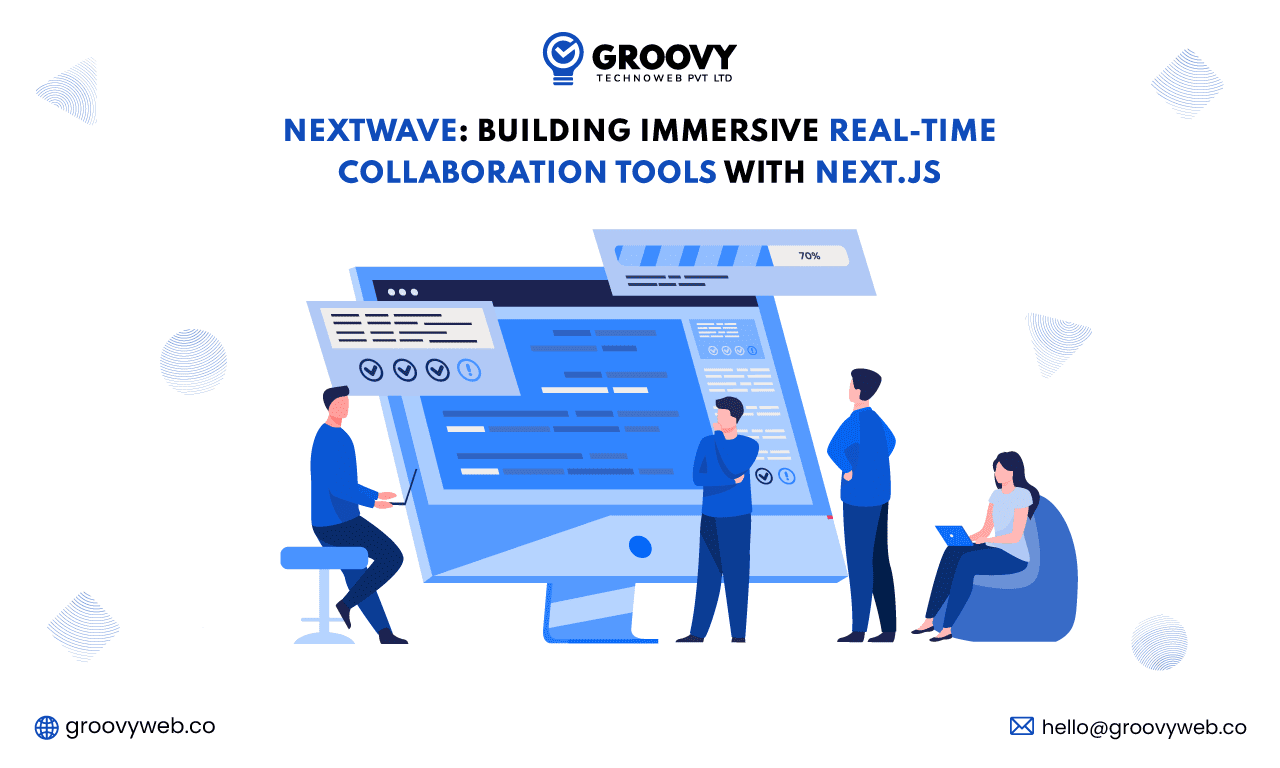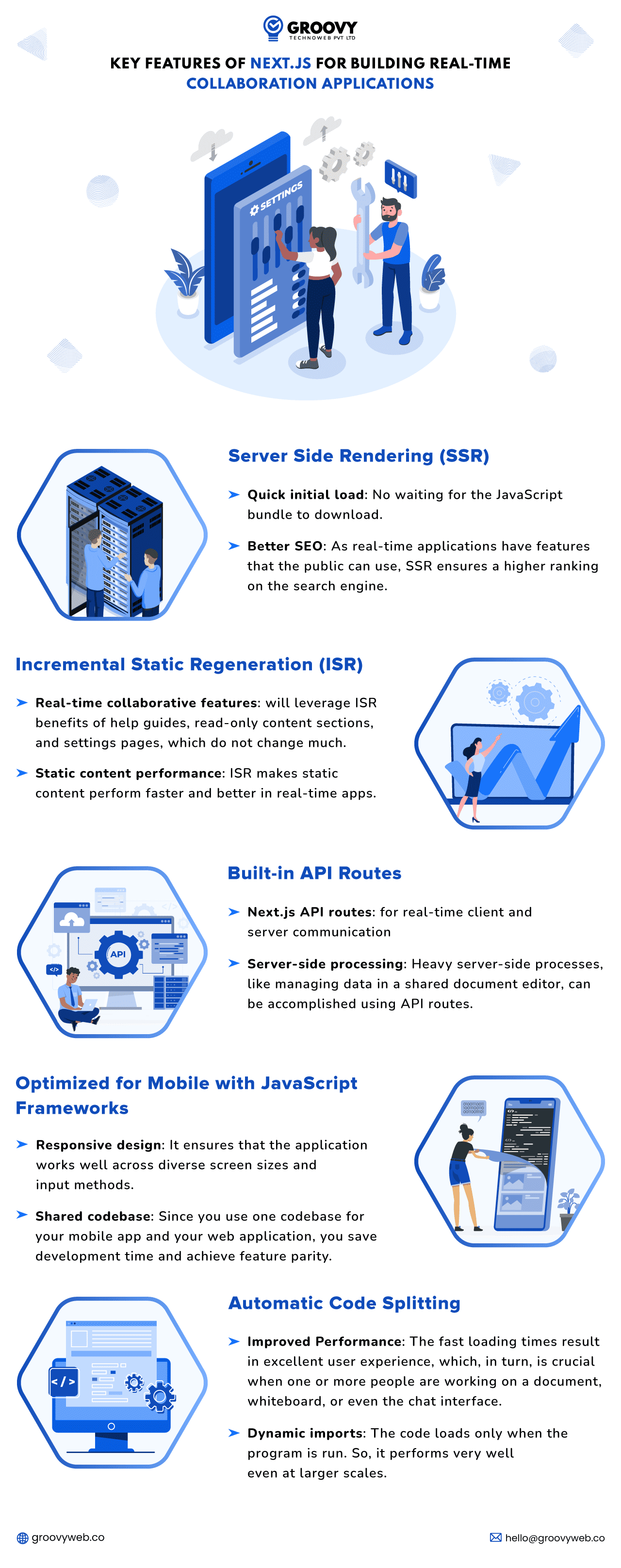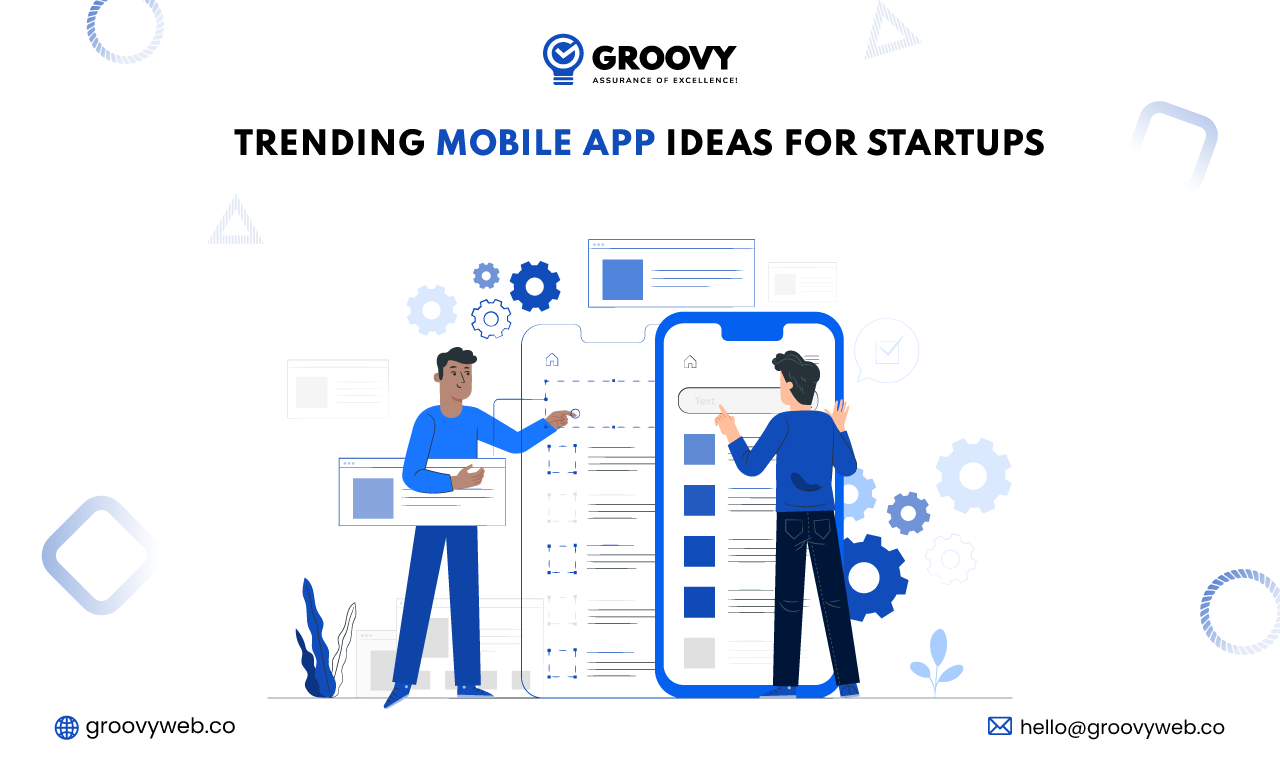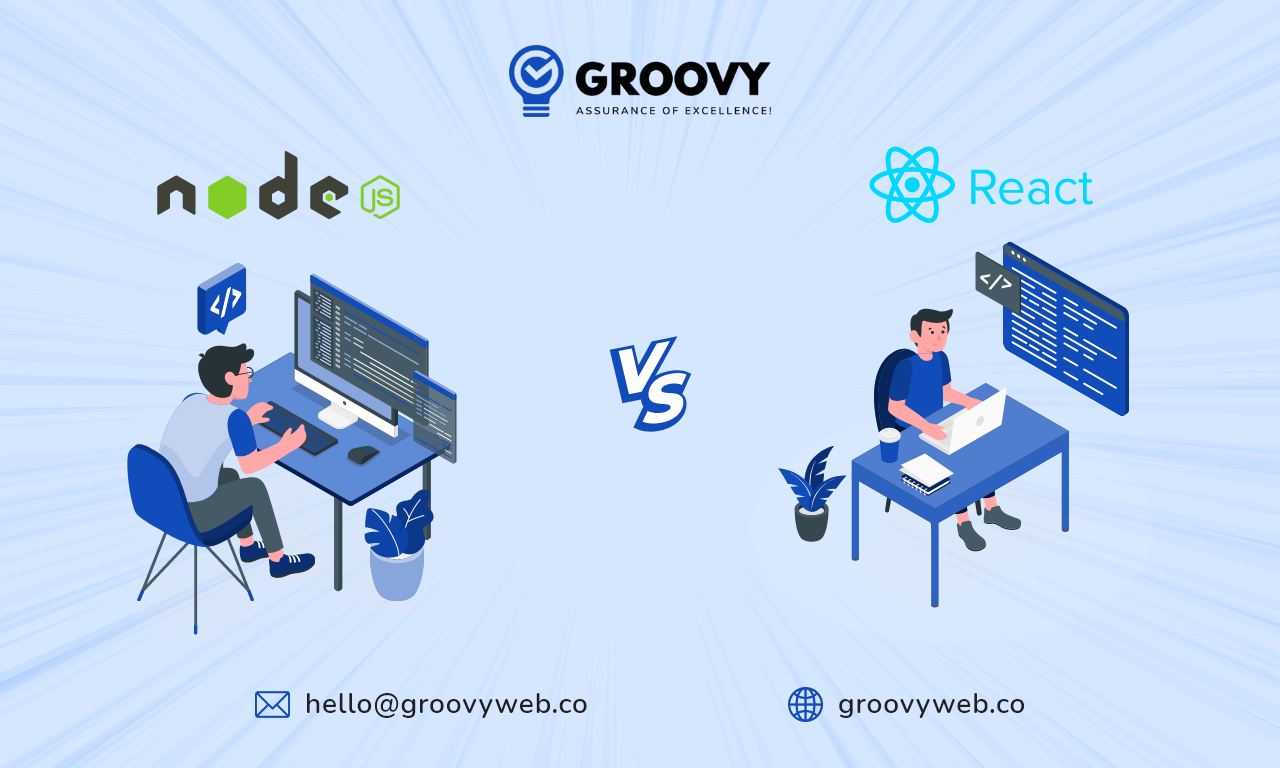NextWave: Building Immersive Real-Time Collaboration Tools In Next.js
Ashok Sachdev
November 15, 2024 214 Views
Quick Summary : The digital world demands efficient real-time collaboration tools for business, education, and teamwork. Next.js, a popular JavaScript framework, is transforming web and mobile app development with speed, scalability, and SSR capabilities. This article explores how Next.js enhances the development of immersive collaboration tools, providing seamless updates, low-latency experiences, and cross-platform compatibility for mobile and web applications. Developers can leverage its robust features, like API routes, to build real-time chat apps, document editors, and more.
With the speed of digitization, all stakeholders, including business persons, educators, and teams, wish to communicate, exchange information, and collaborate on effective real-time collaboration tools in next.js. This trend shows user mobility and increasing international cooperation call for building compelling, engaging, and “rich” collaborative solutions. Among the technologies that are at the forefront of this tendency is Next.js, the widely used JavaScript framework that is changing web apps and mobile development for many developers. In this article, you will learn about building immersive real-time collaborative tools leveraging the power of Next.js and making the most of the next js development agency to develop innovative solutions.
What is Next.js?
Next.js is a free software JavaScript open-source framework that enhances React.js and aims to make web application development easier. It offers an all-in-one solution for the needs of an application regarding server-side rendering (SSR), static site rendering (SSG), and API routing, which explains the popularity of high-quality websites and web apps built with it. Next.js development services have witnessed considerable adoption due to their simplicity, speed performance, and rich developer experience.
The Role of Next.js in Real-Time Collaboration Tools
Real-time collaboration tools enable the participation of multiple users in real-time, like in a text editor, whiteboard, or chat application. Such tools are characteristic in that a high demand was made for frequent updating of content in real-time, allowing one to give feedback simultaneously and accommodating as many users in one instance.
Next.js offers several advantages when building such tools:
- SSR (Server-side rendering): The app is ensured to be fast and SEO-friendly because it generates HTML on the server side and sends it to the browser.
- API Routes: Built-in API routes help developers easily create backend logic to handle real-time updates.
- Static Site Generation (SSG): For some parts of a collaboration application that are not constantly updated, static generation will improve performance.
Optimized for performance: Automatic code-splitting, Image optimization, and Fast refresh-make Next.js development services the perfect pick for real-time applications
Client and Server Integration: Switch between your client-side and server-side logic to ensure you get the interrupted collaborations.
Why Real-Time Collaboration tools in Next.js?
Scalability and Performance
One key reason Next.js development services are in high demand for building real-time collaboration tools is their inherent scalability. With a growing user base, you need a framework that can handle heavy traffic loads without downgrading performance. Next.js takes care of this by using automatic static optimization and incremental static regeneration features, making your web app faster in operation without downgrading the user experience.
Moreover, real-time collaboration requires minimal latency and fast rendering. In this sense, Next.js’s SSR assisted in pre-rendering content that made it available to the browser of the user in a very short period. A fast user interface is one of the keys in real-time collaborative environments, like sharing documents, task management apps, and multiplayer games.
Real-Time Features and API Routes
A significant component of real-time collaboration is data that is constantly being updated and shared across multiple users. You may want to employ WebSocket or another real-time communication protocol to make this happen. Next.js gets around this by allowing you to write backend logic directly into API routes, so you don’t need to worry about a separate backend service. This is incredibly convenient for getting around tasks such as
- Real-time chatting: Push updates in real-time using WebSockets to the front end.
- Editing documents collaboratively: Apply server-side logic to detect updates on a document so that connected clients are notified of the updates.
- Notifications and updates: You will provide real-time notifications for something like mentioning a user or making changes to a document.
With the help of Next.js development services, one can set up API routes automatically that manage these real-time features, thereby integrating frontend and backend capabilities under one framework.
Flexibility with JavaScript Frameworks for Mobile and web app
In addition to Next.js, other JavaScript frameworks used to develop mobile, such as React Native, Express.js, and Node.js, can also be essential in building mobile and web apps. For example, React Native is used to develop mobile apps that share much of their codebase with the Next.js web app. This allows developers to build web and mobile applications with minimal code redundancy.
For collaboration tools, having cross-platform functionality is critical, as users often switch between devices. Integrating Next.js development services with mobile frameworks like React Native makes it easier to create an immersive experience for users, regardless of their device or platform.
Ease of Maintenance
Maintenance and frequent updating are the major considerations when doing real-time development. Next.js development services help developers focus more on writing clean, maintainable code by enforcing best practices such as modular design and clean API routing.
Furthermore, the long-term support and enhancements come from a thriving Next.js community alongside consistent updates from Vercel, the company that stands behind the framework. That is to say, developers can count on Next.js to continue growing, feature new real-time data handling, better SSR, and many more.
Key Features of Next.js for Building Real-Time Collaboration Applications

Server Side Rendering (SSR)
Real-time collaboration tools depend significantly on SSR since they ensure the first-page load is instant. Since content rendering must be done before the server ends, Next.js reduces the time it takes to load the first piece of meaningful content onto the page.
- Quick initial load: No waiting for the JavaScript bundle to download.
- Better SEO: Since real-time applications have features that the public can use, SSR ensures a higher ranking on search engines.
Incremental Static Regeneration (ISR)
Next.js also supports Incremental Static Regeneration (ISR) for the static parts of an application. Here, the component will enable a developer to update static content dynamically without recreating the whole application.
- Real-time collaborative features: will leverage ISR benefits of help guides, read-only content sections, and settings pages, which do not change much.
- Static content performance: ISR makes static content perform faster and better in real-time apps.
Built-in API Routes
Using Next.js, you can coordinate lightweight backend logic with your front-end application. These API routes can easily manage real-time functionality, such as live chat, shared whiteboard, or task list, without needing third-party server-side services.
Other than this, WebSockets are absolutely can be applied with
- Next.js API routes: for real-time client and server communication.
- Server-side processing: Heavy server-side processes, like managing data in a shared document editor, can be accomplished using API routes.
Optimized for Mobile with JavaScript Frameworks
The growth of mobile users requires real-time collaboration tools to be responsive and work with all devices. Next.js development services can integrate JavaScript frameworks to develop mobile and web apps like React Native and Expo, ensuring cross-platform compatibility.
- Responsive design: It ensures that the application works well across diverse screen sizes and input methods.
- Shared codebase: Since you use one codebase for your mobile app and your web application, you save development time and achieve feature parity.
Automatic Code Splitting
Next.js automatically splits code so that only what the client needs on a page will be sent. This cuts down the time to load drastically and is vital for real-time collaboration environments where speed is essential.
- Improved Performance: The fast loading times result in an excellent user experience, which, in turn, is crucial when one or more people are working on a document, whiteboard, or even the chat interface.
- Dynamic imports: The code loads only when the program is run. So, it performs very well even at larger scales.
Real-Time Collaboration, Tool Use Cases, Built with Next.js
Next.js’s versatility enables developers to build various real-time collaboration tools. Below are a few famous examples:
Real-Time Document Editing
A basic example of a true collaboration tool is a document editor, where many users can work on one document at any time. A collaborative editor that has the facility to use multiple users in the same time unit will be supported by next.js development services:
- Live editing: Multiple users can see changes in real time.
- Track changes: Users can see what others have edited.
- Document history: The ability to revert to previous versions.
Real-Time Whiteboards
Whiteboards are everywhere for brainstorming sessions or just plain visual collaborations. With Next.js, it’s possible to create whiteboards where users can engage with each other in real-time through drawing, adding text, or manipulating objects.
- Live sync: Updates on one user’s screen are instantly reflected on others.
- Media sharing: Upload and annotate media like images or PDFs.
Project Management Tools
Project management tools require real-time collaboration for task management, communication, and resource sharing. Features that can be built using Next.js development services include:
- Task updates in real-time: Task status, deadlines, or priority changes are reflected across all users’ dashboards.
- Team chat integration: Integrated chat systems allow real-time conversations without leaving the project management environment.
Real-Time Communication Platforms
Collaboration often involves real-time communication through text, voice, or video. Next.js can be used to build platforms like:
- Chat apps: Like Slack, users can create channels and communicate in real time.
- Video conferencing tools: Integration with WebRTC and other streaming technologies.
Best Practices in Creating Real-Time Collaboration Applications Using Next.js
Use WebSockets for Real-time Data Synchronization
Using WebSockets is way more efficient than sending traditional HTTP requests for synchronizing data in real time. The Next.js user interface is flexible enough, because of its backend logic, to support WebSockets as a seamless integration for data syncing.
Optimization with Caching and Server-side Rendering
Real-time collaboration tools should be designed to process large amounts of data and users without degrading the performance. An application like Next.js, which can leverage SSR and caching, will reduce the server load and ensure a good user experience.
- Cache data wisely: Implement caching mechanisms for the most frequently accessed data, mostly static content.
- To leverage SSR on first load: Real-time apps shall rely on SSR to display initial content without delay, giving an insignificant waiting time to users who are forced to wait for the application to load.
Only authorized users must access shared data and tools in any collaborative environment. Authentication is crucial by integrating a safe authentication mechanism with Next.js API routes.
- OAuth or JWT: Use token-based authentication, such as OAuth or JSON Web Tokens, for safe, scalable authentication.
- Role-based access control: Differently authorizes the work of users according to roles assigned (e.g., viewer, editor, administrator).
Monitor for Real-Time Scalability
As your real-time collaboration tool grows, scalability becomes more critical. Monitoring resource usage, traffic, and performance ensures that your app continues to run smoothly as more users join.
- Scaling Horizontal: Make sure your infrastructure can scale out across many servers.
- Monitoring Data in Real Time: A tool such as Grafana and Prometheus can be added to your application for real-time tracking of performance performance performance.
Deal with Conflicts on Data
Conflicts regarding data may happen when many users interact with the same online collaboration at almost the same time. Users are fine with designing strategies for graceful conflict resolution.
- Versioning: Use a versioning system that tracks differences so the user can undo or merge changes appropriately
- Conflict notification: Let users know when the server-side changes conflict with changes on the client side and enable them to decide how to resolve conflicts.
Optimize for Mobile and Cross-Platform Compatibility
As the usage of mobiles keeps increasing, so does the demand for real-time collaboration tools that must be optimized for web and mobile. Next.js development services with JavaScript frameworks used to develop mobile and web apps like React Native help to create cross-platform app that would ensure a seamless experience.
- Responsive design: It ensures that the app’s UI responds to different screen sizes and devices.
- Cross-platform synchronization: Synchronize the data transparently across web and mobile platforms for seamless collaborative use.
Ensure Data Privacy and Security
Collaboration tools often involve sensitive data, so robust data security is needed. Next.js also includes inherent security features like built-in CSRF protection and protection against common attacks.
- Data encryption: uses end-to-end encryption to guard against data at rest and in transit.
- Adherence: Ensure your application complies with the stipulated data protection legislation, such as the GDPR
Conclusion
Creating rich, interactive, real-time collaboration tools requires a judicious combination of front-end and back-end technologies. Next.js stands out eminently as a JavaScript framework with a significant drive on performance, scalability, and usability. Thus, it is ideally suited for application development in real-time. You can build collaborative environments that would be fast and responsive but scalable and secure with the help of Next.js development services.
Whether you’re developing a document editor, whiteboard, or project management tool, Next.js allows for flexibility in performance optimization features to build robust applications that can easily have real-time features. Plus, by combining Next.js with other JavaScript frameworks used to develop mobile and web apps, including suitable applications like React Native, your applications will be cross-platform and future-proof.
You’ll build the next generation of immersive collaboration tools to support such teams in realizing best practices in mastering real-time syncing, performance optimization, and security. All of these are achievable for all kinds of industries.
Written by: Ashok Sachdev
Ashok Sachdev is the Project Manager at Groovy Web who began his professional career as a programmer at the young age of 17. Ever since then he is actively growing, learning new things, and adapting to new roles and responsibilities at every step. Aside from being an app developer, he is highly admired for his project management skills by his clients.
Frequently Asked Questions
We hope these clear your doubts, but if you still have any questions, then feel free to write us on hello@groovyweb.coWhy use Next.js for building real-time collaboration tools?
Next.js is ideal for real-time tools because it offers fast, server-side rendering and static generation capabilities. This ensures that collaborative tools built with Next.js are highly responsive, scalable, and optimized for performance.
How does NextWave ensure real-time communication between users?
NextWave integrates WebSockets and APIs to provide instantaneous data exchange. This allows users to share updates, messages, and workspaces in real-time without lag, enhancing the immersive collaboration experience.
Can I integrate third-party services with NextWave?
Yes, NextWave supports integration with various third-party services like cloud storage, chat platforms, and authentication providers, allowing you to extend the functionality of your real-time collaboration tools.
What are the key features of NextWave for immersive collaboration?
Key features include real-time data synchronization, multi-user interactions, live updates, customizable UI components, and seamless integration with Next.js, enabling immersive and dynamic collaboration environments.
Related Blog

Krunal Panchal
Trending Mobile App Ideas for Startups in 2023
Mobile App Development 08 Jan 2025 39 min read
Krunal Panchal
Nodejs vs Reactjs Comparison: Which To Choose For Your JS Project?
Technology 04 Nov 2023 8 min read
Kartik Bhaviyash
Groovy Web Recognized by GoodFirms as the Best Company to Work With
Achivements 14 Nov 2024 5 min readSign up for the free Newsletter
For exclusive strategies not found on the blog